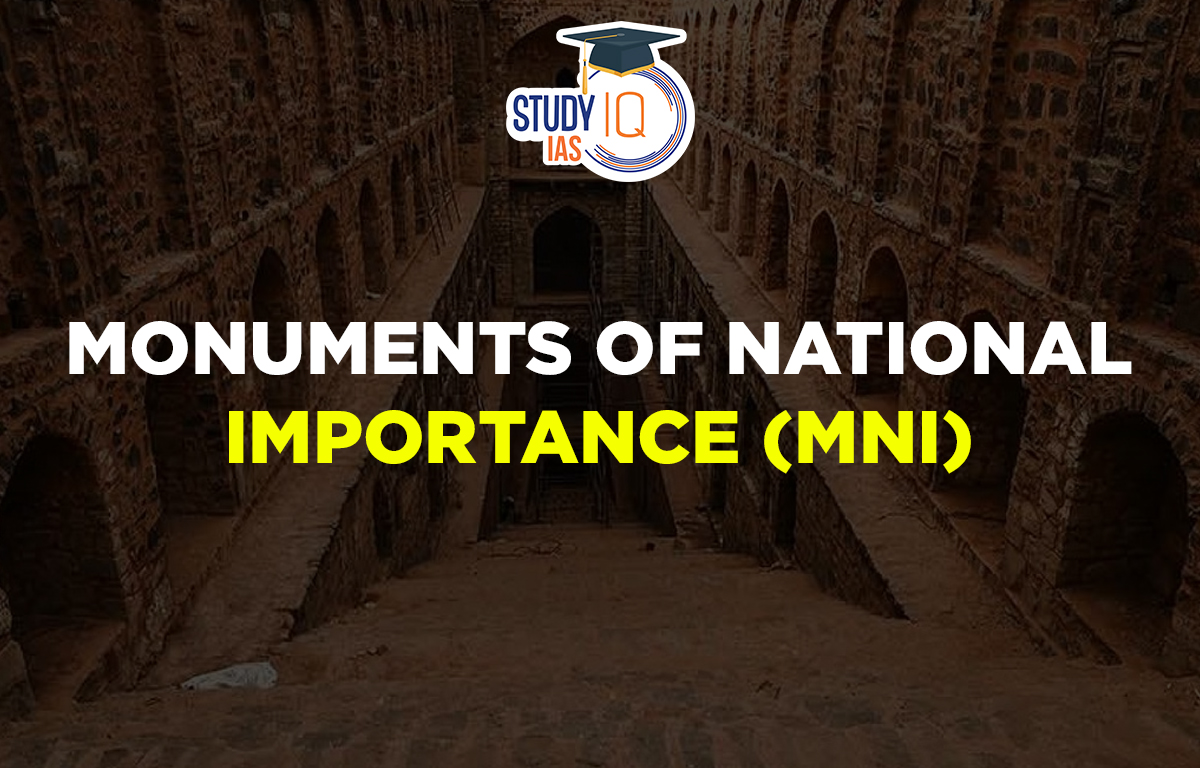Table of Contents
Context: The Economic Advisory Council (EAC) to the Prime Minister has released a report titled ‘Monuments of National Importance: The Urgent Need for Rationalization’.
What are the Key Findings of the Report?
- Outdated list of MNI: The report states that the existing list of MNI has not been reviewed since Independence, and has become “unwieldy” due to the inclusion of minor colonial structures or monuments that are not of national significance.
- Inclusion of Non-Monumental Artefacts in MNI List: The report says that the list includes several moveable, standalone ‘antiquities’ like pieces of sculpture, statues, cannons etc. which are being treated as monuments.
- Inadequate funding: The report pointed out that expenditure on the conservation and maintenance of monuments of national importance is inadequate.
- Missing Monuments: As many as 24 “untraceable” monuments are still being considered as monuments of national importance (MNI).
- The report cited a 2013 audit by the Comptroller and Auditor General, which declared 92 monuments as “missing” after a first-of-its-kind physical verification exercise undertaken after Independence.
- No definition of National Importance: The major problem plaguing the identification and preservation of MNI lies in the Ancient Monuments and Archaeological Sites and Remains (AMASR) Act, 1958.
- Neither the Act nor the National Policy for Conservation (2014) has defined what the term ‘national importance’ means.
Key Recommendations by the Report
- New procedure for declaration: Archaeological Survey of India (ASI) should come up with substantive criteria and a detailed procedure for declaring monuments to be of national importance.
- Book of notifications: The report recommended that ASI should also publish a book of notifications with detailed information about the provenance of MNI.
- De-notification and transfer: Minor monuments and antiquities protected as monuments should be de-notified as MNI and monuments with local importance should be transferred to respective states for protection.
- More funding: Allocation of funds for the protection of MNI should be increased. At the same time, revenue streams such as tickets, events, fees and other sources should be leveraged more proactively and the proceeds should be retained by ASI, the report said.
What are Monuments of National Importance (MNI)?
- A monument or a site is declared to be of National Importance by the Archaeological Survey of India provided it meets the following requirements:
- The monument or archaeological site is not less than 100 years old.
- It has special historical, archaeological or artistic interest, making it worthy of declaration as national importance.
- It qualifies under specified provisions of definition of the Ancient Monuments and Archaeological Sites and Remains Act, 1958.
- The interested public does not have major objections to such declaration.
- The authenticity and integrity of the ancient monument or archaeological site and remains have not been damaged.
- It is free from major encumbrances.
- There are at present more than 3650 ancient monuments and archaeological sites and remains of national importance.
- The Central government on the recommendation of the National Monument Authority (NMA), classified all the ancient monuments or archaeological sites and remains as follows:

Major Agencies



 Assam Police Constable Cut off 2025
Assam Police Constable Cut off 2025
 National Supercomputing Mission (NSM)
National Supercomputing Mission (NSM)
 Asola Bhati Wildlife Sanctuary, Location...
Asola Bhati Wildlife Sanctuary, Location...





















